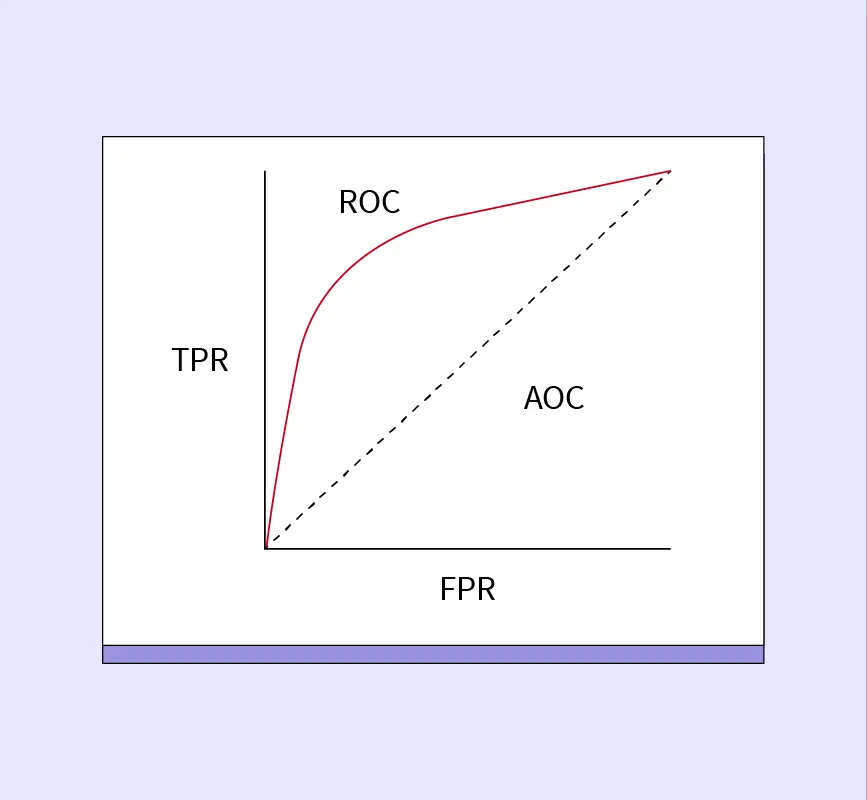Performance metrics in machine learning are tools used to evaluate how well a model performs on a given task. These metrics provide insights into the model’s effectiveness, helping practitioners understand how accurately or reliably the model predicts outcomes based on the data.
Selecting the right performance metric is crucial since different metrics highlight different aspects of model performance. For example, while some metrics focus on accuracy, others measure how well the model handles imbalanced data or minimizes prediction errors. Proper evaluation with performance metrics ensures that the model is optimized not just for the training data but also for new, unseen data.
Performance metrics in machine learning are broadly classified based on the type of task the model is designed to solve. The two primary categories are:
- Classification Metrics
- Regression Metrics
Classification Metrics
These metrics are used to evaluate models that predict categorical outputs (e.g., spam detection, image classification). Common metrics include Accuracy, Precision, Recall, F-score, and AUC-ROC.
1. Accuracy
Accuracy is one of the most commonly used metrics to evaluate classification models. It measures the percentage of correct predictions out of the total number of predictions made by the model.
Formula:
$$\text{Accuracy} = \frac{\text{Number of Correct Predictions}}{\text{Total Number of Predictions}}$$
Example:
If a model predicts correctly for 90 out of 100 test samples, the accuracy would be:
$$\text{Accuracy} = \frac{100}{90} = 0.9 \, (90\%)$$
Limitations:
- Imbalanced Datasets: Accuracy can be misleading when the dataset has imbalanced classes. For instance, in a dataset where 95% of the samples belong to one class, a model predicting only that class will achieve 95% accuracy, but it won’t be useful in practical applications.
- Does Not Capture Specific Errors: Accuracy alone may not highlight specific issues, such as how well the model identifies rare but critical cases.
While accuracy is easy to understand, it should be complemented with other metrics like precision and recall for a more comprehensive evaluation.
2. Confusion Matrix
A confusion matrix is a performance metric used to evaluate the results of a classification model by comparing predicted and actual labels. It provides deeper insights into how well the model distinguishes between different classes by showing the number of correct and incorrect predictions for each class.
Structure of a Confusion Matrix
| Actual / Predicted | Positive | Negative |
| Positive | True Positive (TP) | False Negative (FN) |
| Negative | False Positive (FP) | True Negative (TN) |
Where:
- True Positive (TP): Correctly predicted positive instances.
- True Negative (TN): Correctly predicted negative instances.
- False Positive (FP): Incorrectly predicted a negative instance as positive.
- False Negative (FN): Incorrectly predicted a positive instance as negative.
Example:
Consider a binary classification problem where we predict whether a patient has a disease (Positive) or not (Negative).
- If the model predicts 40 patients correctly as having the disease (TP = 40) and 50 patients correctly as not having the disease (TN = 50),
- But it incorrectly identifies 10 healthy patients as having the disease (FP = 10) and misses 5 patients with the disease (FN = 5), the confusion matrix would look like this:
| Actual / Predicted | Positive | Negative |
| Positive | 40 | 5 |
| Negative | 10 | 50 |
The confusion matrix provides the foundation for other important metrics like precision, recall, and F-score.
3. Precision
Precision is a performance metric used to measure the accuracy of positive predictions made by a classification model. It tells us what proportion of predicted positive instances were actually correct.
Formula:
$$\text{Precision} = \frac{TP}{TP + FP}$$
Where:
- TP (True Positive): Correctly predicted positive instances.
- FP (False Positive): Instances that were incorrectly predicted as positive.
Example:
Using the previous confusion matrix example:
- TP = 40 (correctly identified patients with the disease)
- FP = 10 (healthy patients incorrectly predicted as having the disease)
$$\text{Precision} = \frac{40 + 10}{40} = \frac{50}{40} = 0.8 \, (80\%)$$
This means that 80% of the patients predicted to have the disease actually have it.
Importance:
- Precision is particularly useful when false positives are costly. For example, in a spam detection system, predicting non-spam emails as spam (false positives) could cause important messages to be missed.
- It helps in applications where we care more about the quality of positive predictions.
Precision should be used in conjunction with recall to provide a more balanced evaluation, especially for models working with imbalanced data.
4. Recall
Recall (also known as sensitivity or true positive rate) measures the ability of a classification model to correctly identify all relevant positive instances. It shows how well the model captures actual positive cases.
Formula:
$$\text{Recall} = \frac{TP}{TP + FN}$$
Where:
- TP (True Positive): Correctly predicted positive instances.
- FN (False Negative): Positive instances that were incorrectly predicted as negative.
Example:
$$Recall = \frac{40+5}{40} = \frac{45}{40} = 0.89 \ (89\%)$$
Using the confusion matrix example:
- TP = 40 (patients with the disease correctly identified)
- FN = 5 (patients with the disease incorrectly classified as healthy)
This means that the model correctly identifies 89% of the patients with the disease.
Importance:
- Recall is crucial in scenarios where missing positive cases is costly. For example, in medical diagnosis, failing to detect a disease (false negative) can have serious consequences.
- It provides insights into the model’s ability to minimize false negatives.
Using both precision and recall together gives a more complete picture of the model’s performance, which can be summarized by the F-score.
5. F-Score
The F-score (or F1-score) is a performance metric that combines both precision and recall into a single value. It provides a balanced measure of the two, especially when there is an uneven distribution between precision and recall. The F-score is the harmonic mean of precision and recall, meaning it gives more weight to lower values, ensuring that both precision and recall are considered equally.
Formula:
$$F_1 = 2 \times \frac{\text{Precision} \times \text{Recall}}{\text{Precision} + \text{Recall}}$$
Example:
Using the previous precision (0.8) and recall (0.89) values:
$$F_1 = 2 \times \frac{0.8 + 0.89}{0.8 \times 0.89} = 2 \times \frac{1.69}{0.712} \approx 0.84 \, (84\%)$$
This means the overall F1-score is 84%, representing a trade-off between precision and recall.
Variants of the F-Score:
- F1-Score: Gives equal importance to both precision and recall.
- Fβ-Score: Allows more weight to be given to either precision or recall (where β > 1 emphasizes recall, and β < 1 emphasizes precision).
Importance:
- The F1-score is particularly useful when there is an imbalance between classes or when both precision and recall are important to the application. For example, in medical diagnosis, both catching true positives and minimizing false positives are critical.
6. AUC(Area Under the Curve)-ROC
The AUC-ROC curve is a performance metric used to evaluate how well a classification model distinguishes between classes. It is especially useful in binary classification tasks, where the goal is to separate positive and negative instances effectively.
ROC Curve:
- The Receiver Operating Characteristic (ROC) curve plots the True Positive Rate (Recall) against the False Positive Rate (FPR) at different classification thresholds.
- True Positive Rate (TPR): Recall or sensitivity.
- False Positive Rate (FPR): The ratio of incorrectly classified negative instances, calculated as:
$$FPR = \frac{FP}{FP + TN}$$
AUC (Area Under the Curve):
- AUC is the area under the ROC curve, which provides a single value to summarize the model’s ability to differentiate between positive and negative classes.
- AUC Values:
- 1.0: Perfect separation between classes.
- 0.5: No separation (random guessing).
- < 0.5: The model performs worse than random guessing.
Example:
If a model has an AUC of 0.85, it means that there is an 85% chance that the model will correctly distinguish between a positive and a negative instance.
Importance:
- AUC-ROC is particularly helpful when dealing with imbalanced datasets, as it evaluates the model across all classification thresholds rather than focusing on a specific threshold like accuracy.
- It gives a comprehensive view of the trade-off between true positives and false positives.
Regression Metrics
These metrics are designed for models that predict continuous values (e.g., predicting house prices, stock market trends). The performance metrics for these models differ from those used for classification since they measure the magnitude of prediction errors.
Key Differences from Classification Metrics:
- Classification metrics evaluate the accuracy of categorical predictions (e.g., positive or negative).
- Regression metrics assess how close the predicted value is to the actual value.
The most commonly used regression metrics are Mean Absolute Error (MAE), Mean Squared Error (MSE), R-squared (R²), and Adjusted R-squared.
1. Mean Absolute Error (MAE)
Mean Absolute Error (MAE) measures the average magnitude of errors between predicted values and actual values, without considering the direction of the error (positive or negative). It gives a straightforward idea of how far off predictions are from the actual outcomes.
Formula:
$$MAE = \frac{1}{n} \sum_{i=1}^{n} \left| y_i – \hat{y}_i \right|$$
Where:
$n = \text{Total number of data points}$
$y_i = \text{Actual value}$
$\hat{y}_i = \text{Predicted value}$
Example:
If the actual values are [100, 200, 300] and the predicted values are [110, 190, 310], the MAE would be:
$$MAE = \frac{3}{3} \left( |100 – 110| + |200 – 190| + |300 – 310| \right) = \frac{3}{3} \left( 10 + 10 + 10 \right) = 10$$
Advantages:
- Easy to interpret: It shows the average error in the same units as the target variable.
- Less sensitive to large errors: It treats all individual errors equally.
Disadvantages:
- Ignores the direction of errors: MAE doesn’t indicate whether predictions are consistently higher or lower than actual values.
- Less sensitive to large deviations: Models with a few large errors might still have a low MAE.
MAE is commonly used when all errors, regardless of their direction, are treated with equal importance.
2. Mean Squared Error (MSE)
Mean Squared Error (MSE) measures the average of the squared differences between predicted and actual values. By squaring the errors, MSE penalizes larger deviations more heavily, making it particularly useful when large errors are undesirable.
Formula:
$$MSE = \frac{1}{n} \sum_{i=1}^{n} (y_i – \hat{y}_i)^2$$
Where:
$n = \text{Total number of data points}$
$y_i = \text{Actual value}$
$\hat{y}_i = \text{Predicted value}$
Example:
If the actual values are [100, 200, 300] and the predicted values are [110, 190, 310], the MSE would be:
$$MSE = \frac{1}{3} \left( (100-110)^2 + (200-190)^2 + (300-310)^2 \right) = \frac{3}{300} = 100$$
Advantages:
- Penalizes large errors: Squaring the errors ensures that larger deviations contribute more to the overall error.
- Differentiable: Useful in optimization algorithms like gradient descent.
Disadvantages:
- Sensitive to outliers: A few large errors can disproportionately impact the MSE.
- Harder to interpret: The result is in squared units, making it less intuitive than MAE.
MSE is widely used in regression tasks where minimizing large deviations is important.
3. R2 Score (R²)
R-squared (R²), also known as the coefficient of determination, measures the proportion of the variance in the target variable that is explained by the model. It indicates how well the model’s predictions fit the actual data.
Formula:
$$R^2 = 1 – \frac{\sum (y_i – \bar{y})^2}{\sum (y_i – \hat{y}_i)^2}$$
Where:
$y_i = \text{Actual value}$
$\hat{y}_i = \text{Predicted value}$
$\bar{y} = \text{Mean of the actual values}$
Interpretation:
- R² = 1: The model explains all the variance in the data perfectly.
- R² = 0: The model does not explain any variance, equivalent to using the mean as a prediction.
- R² < 0: The model performs worse than simply predicting the mean.
Example:
If the R² value is 0.85, it means that 85% of the variance in the target variable is explained by the model, and the remaining 15% is unexplained.
Importance:
- Goodness of Fit: R² provides a measure of how well the model captures the relationship between input and target variables.
- Comparing Models: It helps compare the performance of different models on the same dataset.
However, R² alone might not be sufficient, especially when dealing with multiple variables. That’s where Adjusted R² comes in.
4. Adjusted R2
Adjusted R-squared is an improved version of R² that adjusts for the number of predictors (independent variables) used in the model. Unlike R², which can increase when additional variables are added—even if they don’t improve the model—Adjusted R² penalizes for irrelevant variables, ensuring a more accurate evaluation of the model’s performance.
Formula:
$$\text{Adjusted } R^2 = 1 – \frac{(n – p – 1)(1 – R^2)}{(n – 1)}$$
Where:
$R^2$ = R-squared value
$n$ = Number of observations (data points)
$p$ = Number of predictors (independent variables)
Key Difference between R² and Adjusted R²:
- R² can increase by simply adding more variables, even if they don’t improve the model.
- Adjusted R² only increases if the new variable improves the model’s performance; otherwise, it decreases.
Example:
If a model has R² = 0.85, but after adding another variable, the Adjusted R² drops to 0.82, it indicates that the additional variable didn’t improve the model.
Importance:
- Prevents Overfitting: Adjusted R² helps avoid overfitting by penalizing unnecessary variables.
- Evaluates Multiple Variables: It’s useful for assessing models with many predictors and ensuring only meaningful ones are included.
Adjusted R² is commonly used when working with multiple independent variables to ensure the model generalizes well to new data.
Conclusion
Performance metrics are crucial for evaluating and improving machine learning models. Classification metrics like accuracy, precision, recall, F-score, and AUC-ROC help assess how well a model distinguishes between classes. Regression metrics such as MAE, MSE, R-squared, and Adjusted R-squared measure how closely predictions match actual values.
Choosing the right metric ensures reliable model performance. For example, precision and recall are vital for imbalanced datasets, while MSE is useful when minimizing large errors. A proper understanding of these metrics helps fine-tune models and ensure better generalization to unseen data, leading to more accurate predictions.
References:


